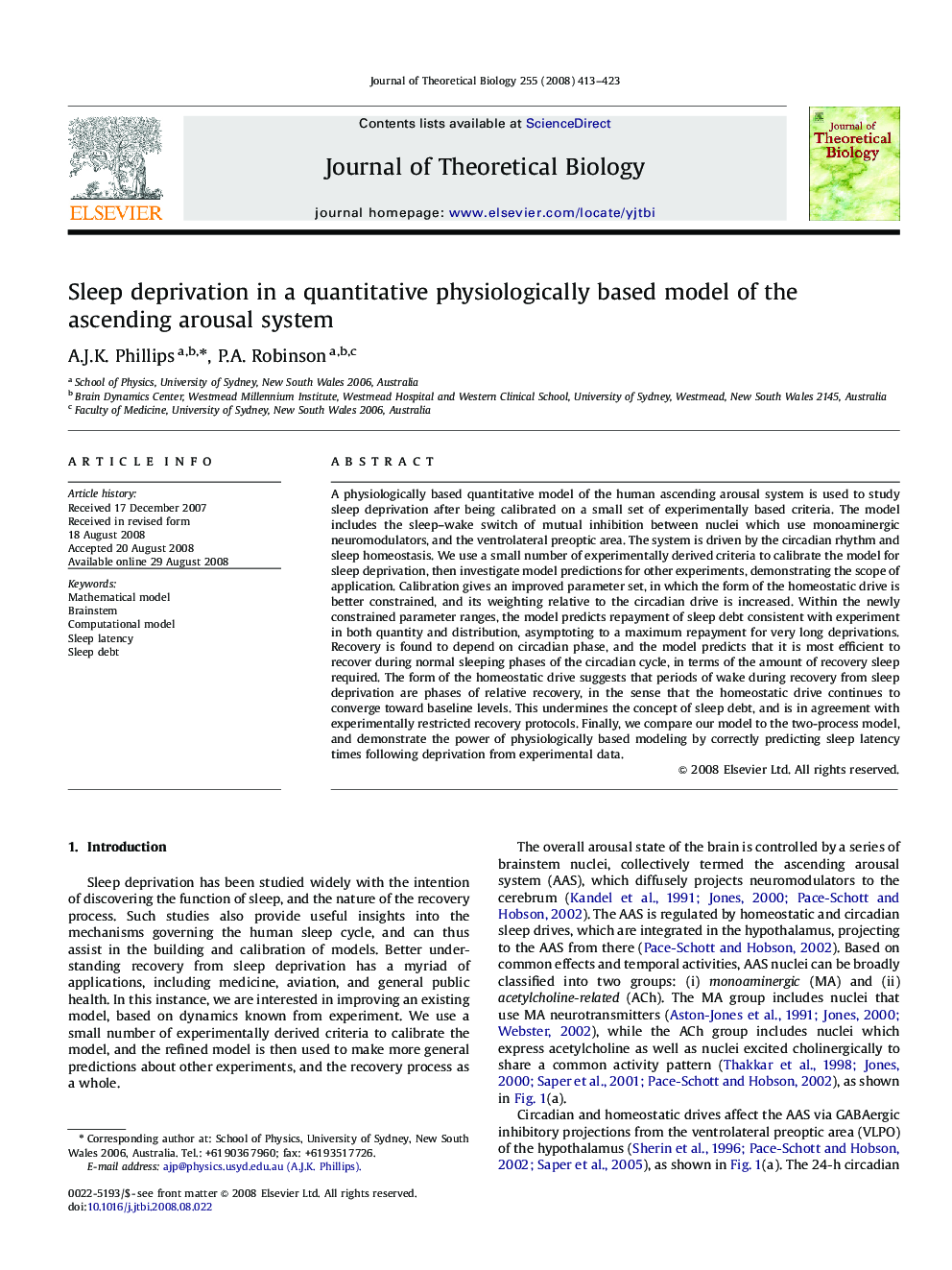| کد مقاله | کد نشریه | سال انتشار | مقاله انگلیسی | نسخه تمام متن |
|---|---|---|---|---|
| 4498599 | 1318990 | 2008 | 11 صفحه PDF | دانلود رایگان |

A physiologically based quantitative model of the human ascending arousal system is used to study sleep deprivation after being calibrated on a small set of experimentally based criteria. The model includes the sleep–wake switch of mutual inhibition between nuclei which use monoaminergic neuromodulators, and the ventrolateral preoptic area. The system is driven by the circadian rhythm and sleep homeostasis. We use a small number of experimentally derived criteria to calibrate the model for sleep deprivation, then investigate model predictions for other experiments, demonstrating the scope of application. Calibration gives an improved parameter set, in which the form of the homeostatic drive is better constrained, and its weighting relative to the circadian drive is increased. Within the newly constrained parameter ranges, the model predicts repayment of sleep debt consistent with experiment in both quantity and distribution, asymptoting to a maximum repayment for very long deprivations. Recovery is found to depend on circadian phase, and the model predicts that it is most efficient to recover during normal sleeping phases of the circadian cycle, in terms of the amount of recovery sleep required. The form of the homeostatic drive suggests that periods of wake during recovery from sleep deprivation are phases of relative recovery, in the sense that the homeostatic drive continues to converge toward baseline levels. This undermines the concept of sleep debt, and is in agreement with experimentally restricted recovery protocols. Finally, we compare our model to the two-process model, and demonstrate the power of physiologically based modeling by correctly predicting sleep latency times following deprivation from experimental data.
Journal: Journal of Theoretical Biology - Volume 255, Issue 4, 21 December 2008, Pages 413–423